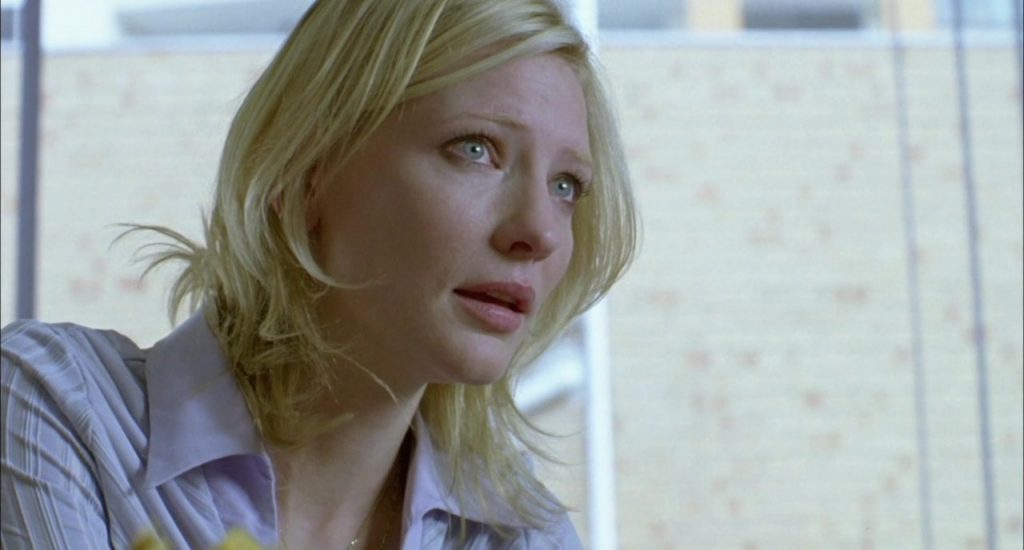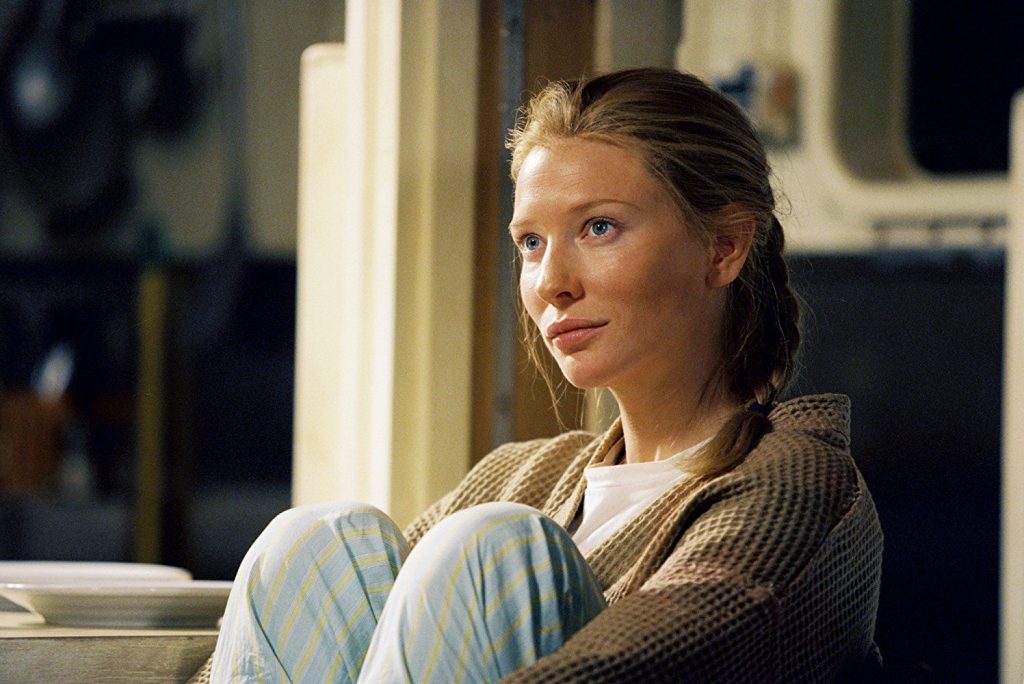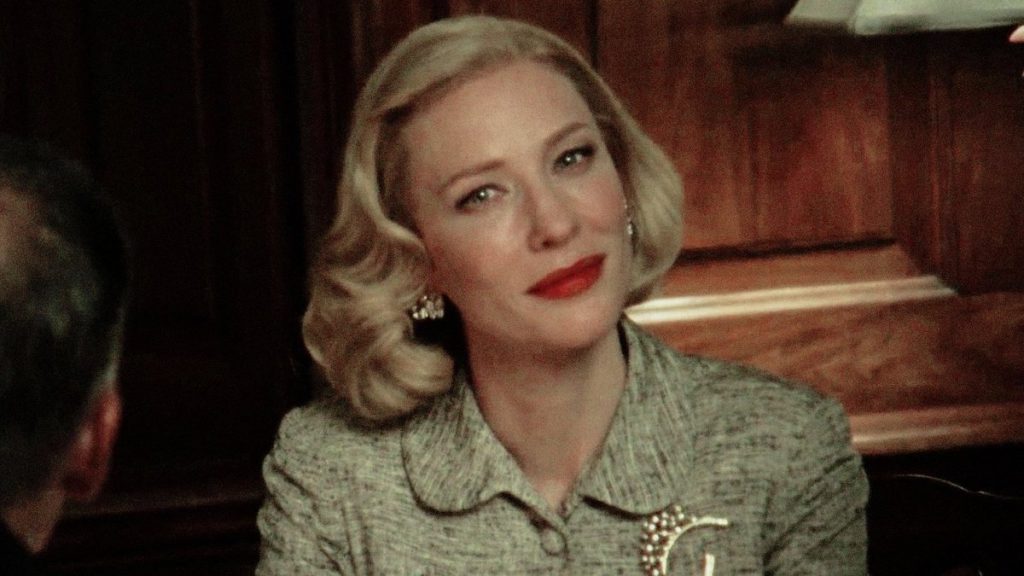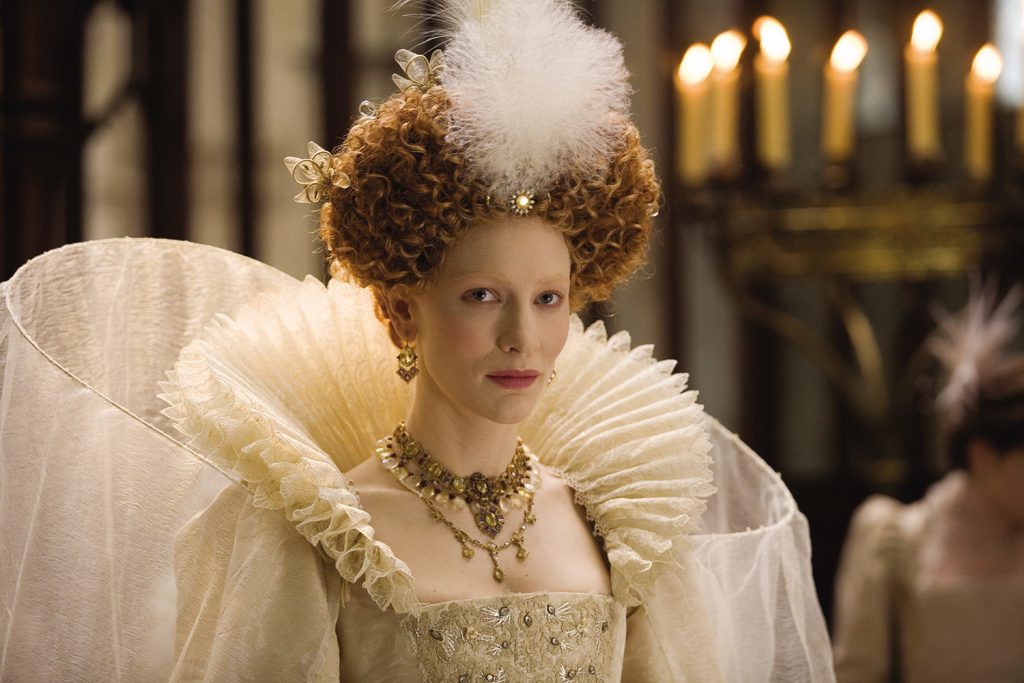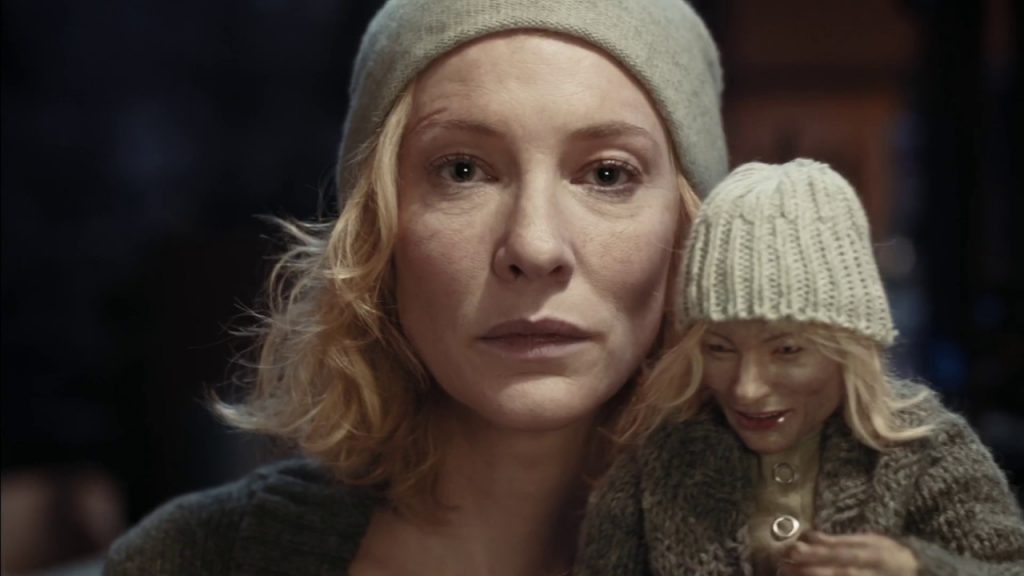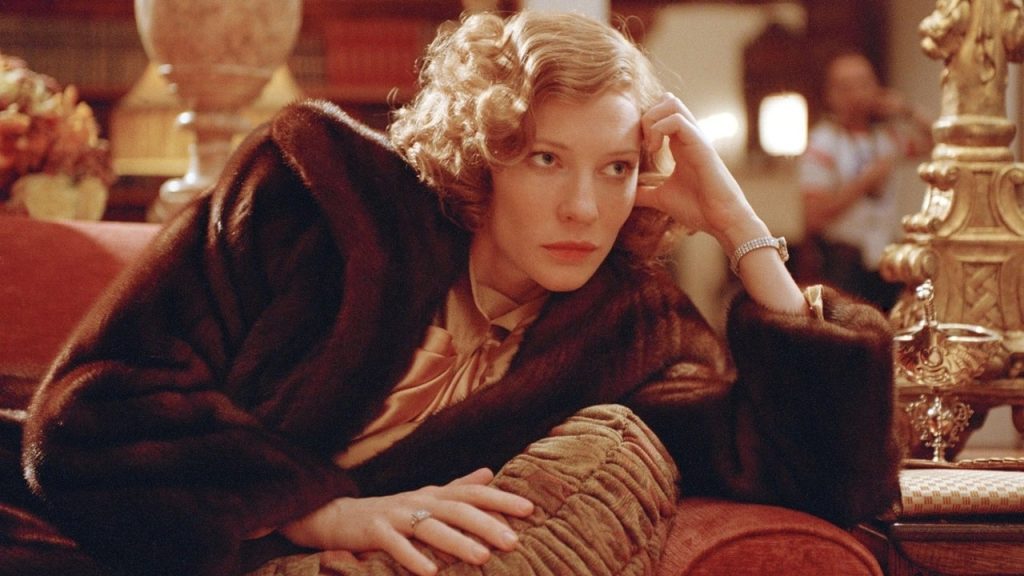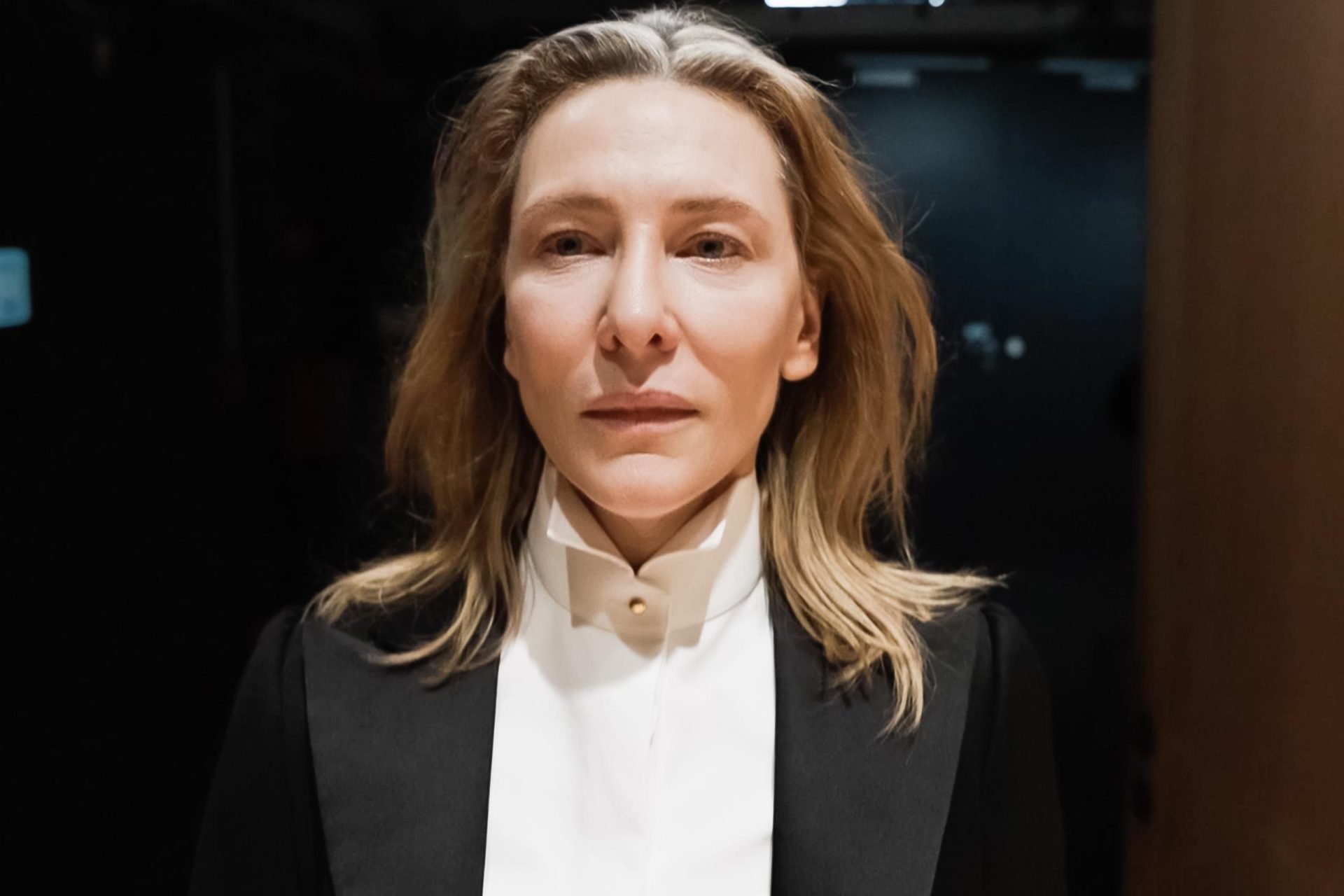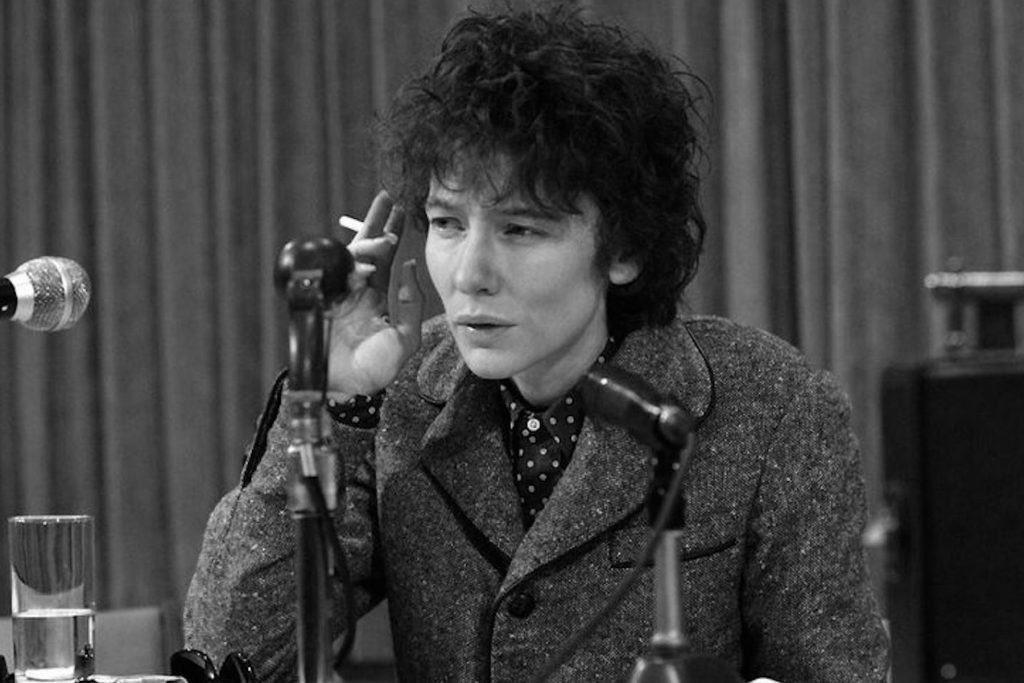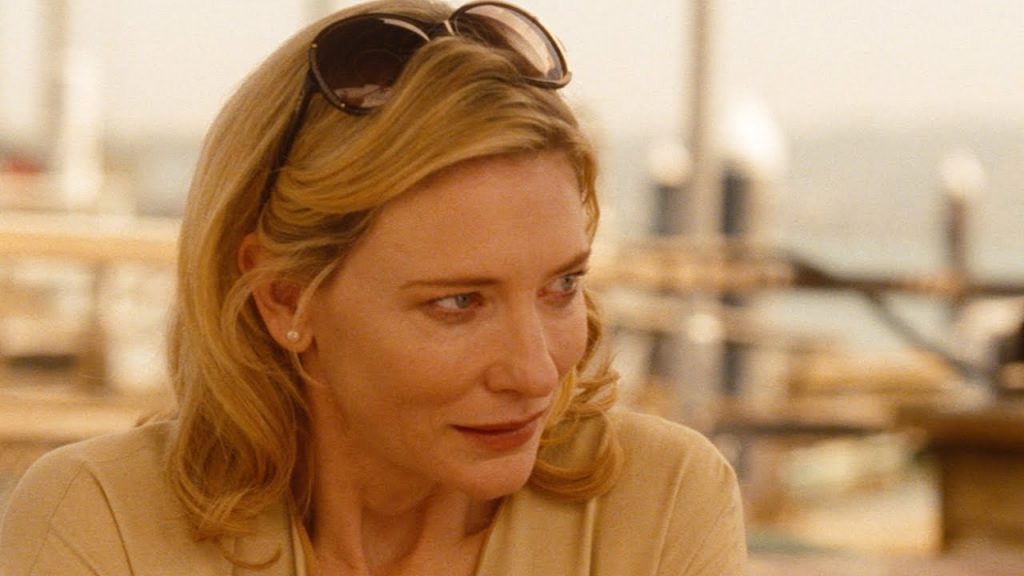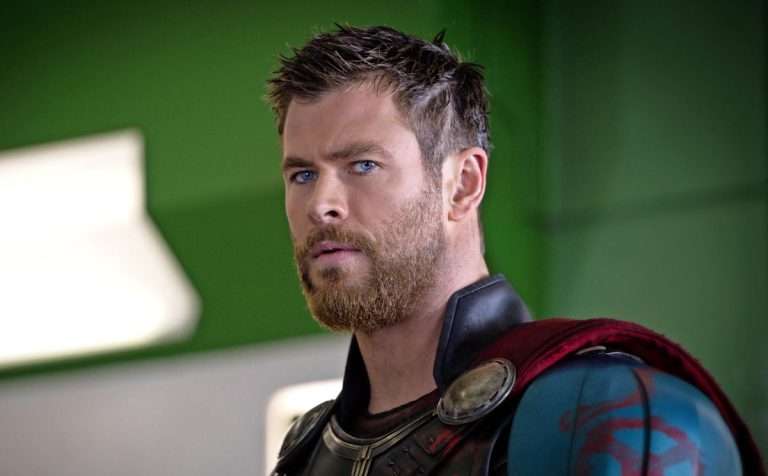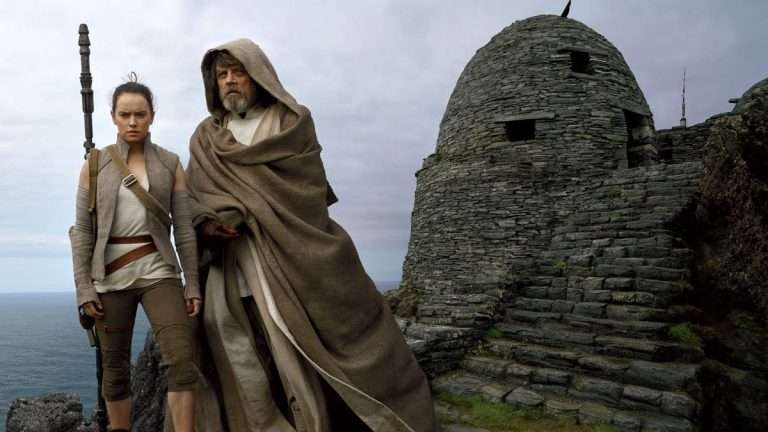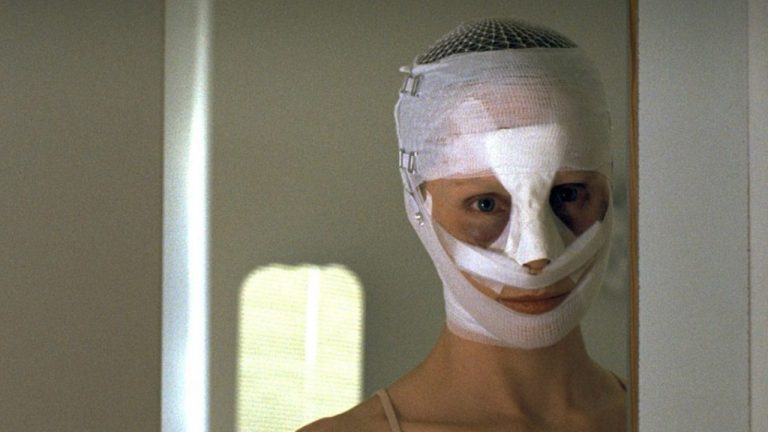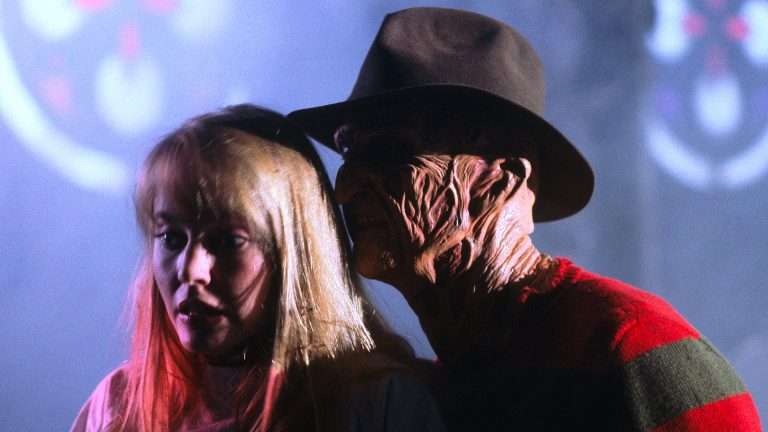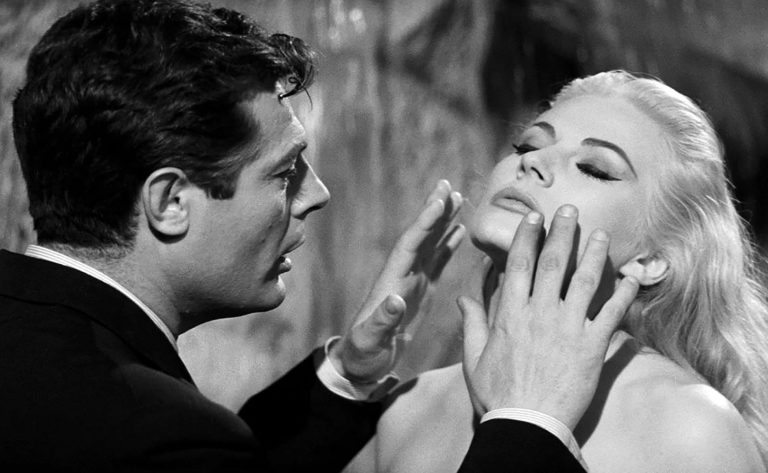Arguably, no other leading lady has done a more praiseworthy job of choosing projects in the modern era as Cate Blanchett. Since gaining international recognition with Elizabeth (1998), the Australian actress has proven she can express any accent, nationality, and any emotion – even when the material is weak, her performance is often still a success, and she’s usually working with an interesting director.
Her most iconic role is as the ethereal Galadriel in the Lord of the Rings (2001-03) and Hobbit trilogies (2012-14), but she has also played deftly realized characters in more fringe projects. Some of these include a dual role where she played both herself and a fictional cousin in Jim Jarmusch’s Coffee and Cigarettes (2003); a character that summons the aura of Marlene Dietrich in Steven Soderbergh’s The Good German (2006); and a sinister CIA operative with a Wicked Witch sensibility in Joe Wright’s Hanna (2011).
It’s also notable she has made brief appearances in not one but two Terrence Malick films – Knight of Cups (2015) and Song to Song (2017) – despite the increasingly under-estimated director’s waning reputation. Unlike certain other actors we could name, Blanchett’s eclectic filmography indicates she’s intrigued by not just the challenges of the role but also by who is working behind the camera.
Related to Cate Blanchett: Every Taika Waititi Movie Ranked
10. Little Fish (2005)
A performance that can be considered one of Blanchett’s most raw but also most internalized. In Rowan Woods’ Australian independent drama, she plays former heroin addict Tracy Heart, who aims to stay clean and start her own business. But whereas other films may show their protagonist backsliding into their old drug habits, Little Fish is less concerned with addiction than with how the former user deals with their co-dependents – here, depicted by the detoxifying family friend Lionel (an almost unrecognizable Hugo Weaving), her ex-boyfriend Jonny (Danny Nguyen) and drug dealing brother Ray (Martin Henderson); all of whom can hinder Tracy from re-establishing herself.
Blanchett’s characters are often defined by their gestures or accents, but there’s little room for such expressivity here, as Tracy responds to her mounting stress by suppressing her discomfort inwards. Her weariness makes her appear firm yet vulnerable, particularly when juxtaposed with Nguyen’s breezy confidence and Weaving’s liveliness. Scenes that could be played more pointedly – witnessing a family row, receiving an unexpected phone call from a former lover, even a romantic rekindling – are done so with restraint until the bubbling emotions upsurge later on, such as when Tracy is refused a bank loan. By the final act, Tracy’s getting enmeshed in a drug deal gone wrong feels all but inevitable. Her performance in Little Fish gives her a spot in our list of best Cate Blanchett Movies.
9. Truth (2015)
Blanchett commands attention from her first appearance as Mary Mapes in Truth. Although Mapes is seeking a lawyer’s counsel, she nevertheless strides into his office and presents herself as a steely and professional woman who’s making the best of a worsening situation with a sardonic sense of humor. A series of flashbacks fill us in: she was the TV producer behind the 2004 ’60 Minutes’ report into how George W Bush dodged his duties at the National Guard during the Vietnam war. CBS airs the show, but ensuing controversy involving unreliable sources, unverifiable documents, online activists, and political pressure has now put the journalist’s career at risk.
Similar Film: Best Picture Winner ‘Spotlight (2015)’
As in James Vanderbilt’s previous screenplay for David Fincher’s Zodiac (2007), there is a density of names, dates, and historical facts that threaten to overwhelm the narrative and give the actors little to do except spout exposition. But Blanchett brings to life what could have been an under-developed role in a fervent portrayal that channels Faye Dunaway in Network (1976) at her most forceful and sharp-tongued, even as Mapes’ world begins falling apart. Truth may be a bit too congratulatory in tone for a film that’s ultimately about journalistic failure. Still, Blanchett’s turbo-charged turn is essential for anyone who’s a fan of strong female characters who burn up the screen.
8. The Life Aquatic with Steve Zissou (2004)
Wes Anderson has a stable set of regulars who feature in most of his films, but he’s sadly worked with Blanchett only once thus far. The oceanographer Steve Zissou (Bill Murray) and his mission to hunt down and kill a ‘jaguar shark’ is the main focus of Anderson’s ensemble comedy, where each character has at least one moment to shine. Blanchett stars as Jane Winslett-Richardson, another no-nonsense reporter but one that’s very different from Mary Mapes of Truth, as she utilizes her subtle comic screen presence to illustrate a personality that’s like a mix between Lois Lane and Jane Goodall.
Related to Cate Blanchett Movies: Every Wes Anderson Film Ranked
She’s a bundle of eccentricities, as with all Anderson characters, whose persnickety gestures and formal speaking style are dry and understated enough not to feel too quirky – even in a scene as preposterous as the one where she reads Proust’s In Search of Lost Time aloud to her unborn child. Jane’s high-strung nature and impatience with Zissou are a delight (and a light relief from Zissou’s more toxic neuroticism), but so is her quiet jadedness. When Zissou asks her, “Are you going to put in a good description of the command center I’ve set up down here?” the camera pans over to Jane, who replies with an insolent shrug, a touch of nonverbal comedy as hilarious as anything else in the cinema of Wes Anderson.
7. Carol (2015)
Cate Blanchett and Rooney Mara’s near-impassive faces mask their romantic yearnings for each other in Carol, an adaptation of Patricia Highsmith’s novel The Price of Salt (1952). The love affair between shy shopgirl Therese (Mara) and the older Carol Aird (Blanchett) develops slowly as the pervasive homophobia that engulfed the era prevents the characters from sharing their feelings until well into the second half of the book. Todd Haynes, whose clinical touch and fascination with surfaces were displayed in Far from Heaven (2002), and I’m Not There (2007), is a befitting illustrator of this tension between maintaining public decorum and suppression of private desire. Under Haynes’ direction, seeing Carol and Therese get together feels like an intrusion of privacy, as they’re both filmed from an affair, positioned off-center and with window frames bisecting the view like prison cell bars.
Related to Cate Blanchett Movies: Carol (2015) – A Flawless Film
Carol is a refined, patrician creature who wafts through dinner parties and lavish shops with the confidence of someone who appears to have it all. Just as Haynes is meticulous in recreating the fashion and ambiance of mid-century New York, Carol is acutely aware of the need to conform to societal norms, as any misstep could potentially lead to her ostracism. Carol’s elegant frailty cloaks her distress, and the facade begins to show some cracks in the film’s final scenes. When she reunites with Therese after months of no contact, she invites her estranged lover back into her life again with a whispered affirmation of love that trembles with regret and desperate longing.
6. Elizabeth (1998)
To portray Queen Elizabeth I and make her feel fresh and excited is always a challenge. Still, in Shekhar Kapur’s stylized biopic about the Virgin Queen’s tumultuous early reign, Blanchett exceeds expectations in what became her breakthrough role – albeit with a screenplay that makes many dramatic licenses. Kapur’s historical drama may be set in the sixteenth century. However, it narratively resembles a modern gangster movie. As Elizabeth ascends to the throne, she finds herself at odds with members of her court who conspire against her and will take any means necessary to restore Catholicism in England.
Blanchett humanizes England’s historic icon of frugality and political caution with a shrewdness that’s sometimes muted by a recurring look of uncertainty when advised by her deceitful peers and by her girlish glee in her dalliances with the man she can’t have, Lord Robert Dudley (Joseph Fiennes). Moreover, like Al Pacino’s character in The Godfather (1972), the sensitive lamb maneuvers her way through palace intrigue, avoids assassination attempts, and seamlessly hardens into a calculating and imperious leader.
5. Manifesto (2015)
One of the most audacious films Blanchett has ever been involved in wasn’t originally a film at all. Gallery artist Julian Rosefeldt created Manifesto as a multi-screen video installation, whereby viewers would watch Blanchett play 13 different characters on different screens, each one reciting extracts from the most pivotal art manifestos of the last 200 years. Rosefeldt then turned it into a 94-minute feature, which is just as engrossing as any narrative film thanks to its consistent visual style, careful editing, and its lead actor’s ever-dazzling versatility.
Amongst Blanchett’s most memorable characters include: a homeless, bearded Scotsman who angrily shouts a Situationist call to arms into a desolate, post-industrial landscape; a TV broadcaster who delivers Elaine Sturtevant quotes with Fox News-style rising inflections; a widow who tearfully addresses funeral attendees with Dada aphorisms; and a conservative American mother who recites Claes Oldenburg’s 1961 manifesto in the form of a grace prayer, while her yawning children just want to start eating their dinner. The best and funniest scene is one dedicated to film manifestos, in which Blanchett plays a teacher who instructs adherence to von Trier’s and Vinterberg’s Dogme 95 rules to a class of dutiful schoolchildren.
4. The Aviator (2004)
Martin Scorsese’s biopic about the eccentric business magnate Howard Hughes (Leonardo DiCaprio) is beset with the usual problems often found in the genre: mainly, it tries to pack in too much. We watch Hughes over many different stages of his life – including, but not limited to, his filmmaking days in the 1920s and ‘30s, and the construction of the ‘Spruce Goose’ flying boat in the 1940s, as well as his worsening obsessive-compulsive disorder – but there’s little insight about what made the aviation pioneer tick. But the film is still worth seeing for what Blanchett does in the role of Hughes’ most glamorous of Hollywood paramours, Katherine Hepburn.
Related to Cate Blanchett Movies: 10 Best Films Of Martin Scorsese
Cate, as Kate, is the movie’s wellspring of joy, as funny and as wondrous as the star she imitates so impeccably. When Hughes and Hepburn get to know each other over a game of golf, we hear Blanchett using that chatty voice and see her twirling her golf club as she saunters down the green, brilliantly capturing the larger-than-life star’s brazen charm without slipping into caricature. In fact, she’s so good the film gets less interesting after she disappears. After Hepburn dumps him, Hughes starts seeing other women, including an emotionally colder Ava Gardner (Kate Beckinsale), who can only pale in comparison. Whether it’s factually accurate or not, The Aviator suggests it was only when he was with Katherine Hepburn that Howard Hughes was truly happy. Her performance in Scorsese’s film wins the 4th spot in our list of best Cate Blanchett Movies.
3. Tár (2022)
One of the funniest things about TÁR is how many people watched Todd Field’s character study about an egoistic lesbian classical music conductor and mistook the title character as an actual person. Of course, Field never intentionally misleads us into thinking this is a biopic rather than a portrait of power dynamics in our era where ‘cancel culture,’ and #MeToo are still in the headlines. Still, both the director and Blanchett in the lead role evoke the character’s reality so vividly, at times, it feels like we’re peeking into the elite world of classical music and learning more about its institutional norms.
The opening scene is one of the film’s best: an interview between The New Yorker’s Adam Gopnik (playing himself) and Lydia Tár (Cate Blanchett), which serves to introduce our protagonist and bedazzle us with all her professional accolades. The way Blanchett as Tár rattles off her answers, dropping bon mots, explicating her artistic process, and sharing what she learned from her mentor Leonard Bernstein, her manner is casual yet obviously rehearsed to the smallest punctuation. We find ourselves wanting to learn more about Tár and her insights, and yet we feel twinges of skepticism: Is this charismatic maestro and EGOT winner as authentic as she appears?
The answer, of course, is no. A good part of what makes Tár such an intriguing protagonist is her steely, imperious manner and how little chinks in her armor appear as her past begins to haunt her in the form of e-mails, mysterious gifts, and the sounds of screaming in the middle of the night. Just as controlled is Field’s direction, his pacing and long takes recall the reserved formalism of Michael Haneke. (The scene where Tár receives a copy of Vita Sackville-West’s Challenge, a novel inspired by the author’s same-sex love affair, recalls the provocative use of video tapes in Caché [2005]).
When she experiences her professional downfall, Tár visits her childhood home, where we learn her birth name is actually Linda. She watches an old VHS recording of Leonard Bernstein, and we witness Tár at her most vulnerable: a tear rolls down her face as she listens to her mentor, and we realize there is a possibility she may never have met ‘Lenny’ at all. Moments like this make TÁR one of this year’s best films and one of Blanchett’s most layered and surprising roles.
2. I’m Not There (2007)
Todd Haynes’ deconstruction of the biopic is ultimately more successful than Scorsese’s film as it understands the genre’s inability to reduce something as irreducible as one person’s life for an easily digestible narrative form. It could be a film about anyone, but is there a celebrity whose public image has been so amorphous and so erratic over so many years than Bob Dylan? It’s why Haynes casts six different actors to represent Dylan’s ceaseless re-stylings: Ben Whishaw is Arthur Rimbaud, Dylan’s favorite poet; Marcus Carl Franklin is a preteen freighthopper who wants to be Woody Guthrie; Christian Bale is Jack Rollins, a protest folksinger; Heath Ledger is the actor who plays Rollins in a film within a film; Richard Gere is reclusive Western outlaw Billy the Kid; and then there’s Blanchett playing Jude Quinn, a folk star who’s gone electric (i.e., the coolest of all Dylan personas).
Related to Cate Blanchett Movies: Every Heath Ledger Performance Ranked
It’s unclear why an actress had to play Quinn when everyone perceives him as male (to represent Dylan’s sexual ambiguity, perhaps?). But it doesn’t matter, as Blanchett resembles the real-life Dylan more closely than any of her male co-stars. Her whiny voice and haughty mannerisms are so unerring, it’s almost like re-watching the real Dylan swagger his way through D.A. Pennebaker’s classic rockumentary Don’t Look Back (1967). Just as Haynes won’t try to pin down the essence of Bob Dylan, Jude Quinn refuses to open up either as an enigmatic lyricist or as a human being to the press, opting instead to laugh off their questions and succumb to drug-induced daydreams petulantly. Embodying the most notorious traits of mix-Sixties Dylan, Blanchett’s rendering is at turns hilarious, dynamic, streetwise, and obnoxious in all the best ways.
1. Blue Jasmine (2013)
In perhaps the most intense Woody Allen film since Husbands and Wives (1992), Blanchett’s portrayal of a character whose life lurches from being a pampered wife to a penniless, nervous mess is as engrossing as it is excruciating. The prolific writer-director would often borrow ideas from the likes of Bergman and Fellini; here, the source of inspiration is Tennessee Williams’ A Streetcar Named Desire. (1947) There’s a lot of Blanche DuBois in Jasmine Francis – both of them are wealthy dreamers and forced to take refuge with their working-class sisters – but in Allen and Blanchett’s hands, the genteel Southern belle from Williams’ play is turned into a vain Manhattan socialite who shoots piercing glares toward those she deems inferior.
Although Jasmine is more intense than Blanche, she is just as obsessive in cultivating her self-image as Williams’ character. The attraction of Allen’s film is in how she deals with her loss of financial status. From how she reminisces about how she met her first husband to how she spouts endless lies to secure a second one, it’s clear her self-delusion will be her undoing. Furthermore, Blanchett’s agitated performance – where one rattled-off anecdote can include several mood swings, vacillating from wistfulness to blithe indifference to simmering anger and back again – is one of her most protean and encapsulates the character’s fitful, fractured sense of self.

